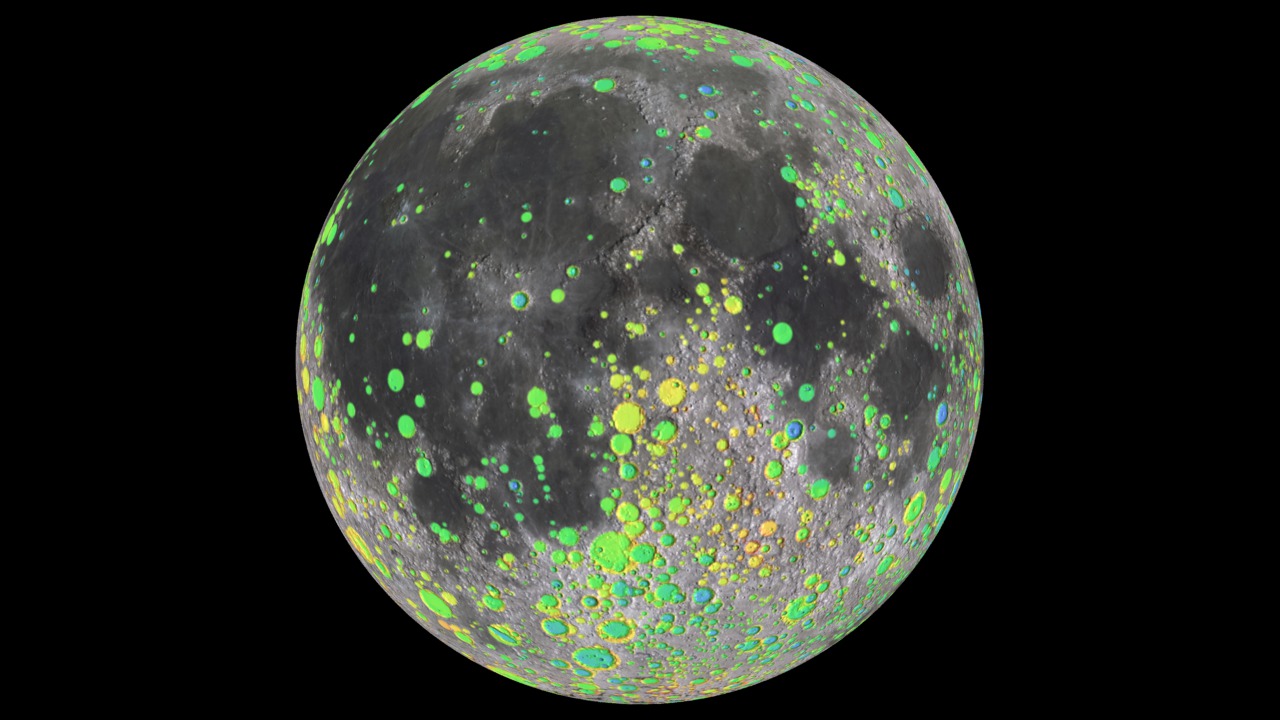Counting Craters

A census of the moon’s craters is helping scientists decipher its history.
Ever since Galileo first trained his telescope on the moon in the 17th century, astronomers have wanted to know more about its craters: How many pit its surface? How big are they? And how did they form? Answers came flooding in when NASA’s Lunar Reconnaissance Orbiter (LRO) began circling the moon in 2009. A laser-ranging instrument aboard the spacecraft mapped the moon’s topography in high definition, revealing the location of more than 5,000 craters over 12 miles in diameter, and countless others smaller in size. Researchers found the distribution of large and small craters varies, with more big craters covering the moon’s bright highlands, and more small craters dotting the dark lowlands. The results suggest two distinct populations of impactors pummeled the moon over the past 4.5 billion years. Watch the video to see a color-coded map of lunar craters created from LRO data.
This visualization highlights over 5,000 of the moon’s largest craters. Colors indicate crater elevation, with highest in red and lowest in blue.

A hunk of rock larger than Manhattan could have blasted Hertzsprung crater (orange, center), one of the moon’s largest and oldest.

Even the smallest of the craters seen here would have been gouged by an impactor at least the size of a football field.

The blue-colored craters near the bottom of this map lie inside the South Pole-Aitken basin, one of the largest impact basins in the solar system.
Credits
Please give credit for this item to:
NASA's Scientific Visualization Studio
-
Animators
- Ernie Wright (USRA)
- Marte Newcombe (Global Science and Technology, Inc.)
-
Producers
- Chris Smith (Self)
- Andrew Freeberg (NASA/GSFC)
-
Scientist
- James W. Head (Brown University)
-
Writer
- Kerry Klein (USRA)
Release date
This page was originally published on Tuesday, February 24, 2015.
This page was last updated on Wednesday, May 3, 2023 at 1:49 PM EDT.
